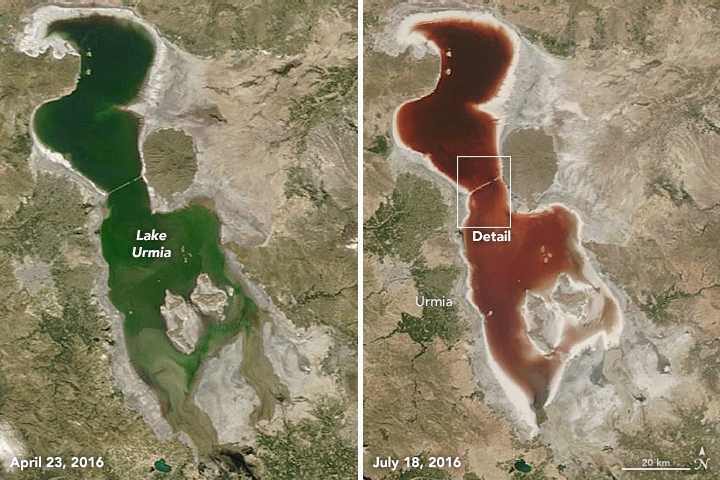Effects of Climate Change
In the next few centuries, the rivers, oceans, and lakes you know now may not be the same. A study by journal Nature communications unearthed the odd fact that most bodies of water will conceivably change color. Lake Urmia in Iran, known for being a deep green color turned to a rich red as temperatures rise and global warming continues. Scientist found that because the earth is getting hotter, the lake began drying, which cause the algae known as Dunaliella salina to morph into a blood red color due to the production of protective carotenoids in the cells. The change from green to red occurred in just over three months and is only one of the many instances of the effects of global warming.
Larger bodies of water such as oceans will also deal with these effects, and phytoplankton will change as oceans continue to warm. Blue oceans will become bluer and greener regions will become greener. The projections made were based off a satellite that measured reflected light. They also predicted that by 2100, the earth’s temperature would rise 3 degrees. Great temperature change causes phytoplankton to produce more chlorophyll in their pigment, which allows them to absorb light for photosynthesis. Like the color of the ocean changes, we can now say the world is indefinitely getting hotter.

Global warming is an ongoing issue for several years but is unexpectedly not answered. We deal with many of its problems from rising waters to severe weathers but recently the problems have become much more complicated. Taking the ocean changing color as an example, most think that it’s just the color of the ocean and the appearance does not make a difference, regardless the ecosystem that inhabits underneath the surface is greatly affected. Says the author of Drastic Global Changes, “More than just an oddity, the changing color is a warning sign,”

Hi, my name is Dylan Yang and I am a senior attending Saint Louis high school. I first came to this school in sixth grade and I enjoy hiking, photography, and...


